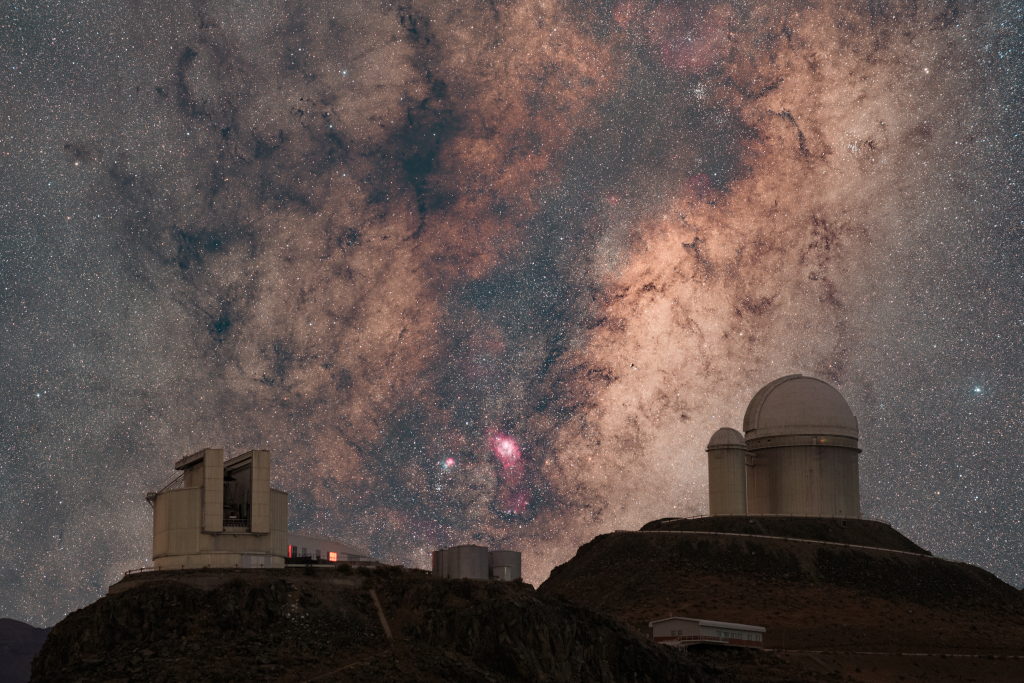2023年12月1日
Milky Way Rising
Image Credit & Copyright: José Rodrigues
Explanation: The core of the Milky Way is rising beyond the Chilean mountain-top La Silla Observatory in this deep night skyscape. Seen toward the constellation Sagittarius, our home galaxy’s center is flanked on the left, by the European Southern Observatory’s New Technology Telescope which pioneered the use of active optics to accurately control the shape of large telescope mirrors. To the right stands the ESO 3.6-meter Telescope, home of the exoplanet hunting HARPS and NIRPS spectrographs. Between them, the galaxy’s central bulge is filled with obscuring clouds of interstellar dust, bright stars, clusters, and nebulae. Prominent reddish hydrogen emission from the star-forming Lagoon Nebula, M8, is near center. The Trifid Nebula, M20, combines blue light of a dusty reflection nebula with reddish emission just left of the cosmic Lagoon. Both are popular stops on telescopic tours of the galactic center. The composited image is a stack of separate exposures for ground and sky made in April 2023, all captured consecutively with the same framing and camera equipment.
Tomorrow’s picture: light-weekend
银河升起
影像提供与版权: José Rodrigues
说明: 在这片深邃的夜空星野里,银河系的核心从智利山顶的拉西拉天文台后方升起。位在人马座方向的银河系核心,左方有欧南天文台,率先使用主动光学以精确控制大望远镜面形状的新科技望远镜。右侧则有欧南天文台的3.6米口径望远镜,它是搜寻系外行星的HARPS和NIRPS光谱仪的基地。夹在二者之间的银河系中心鼓核,塞满了不透光的星际尘埃、亮星、星团与星云。包括在银核中心附近,正在散发鲜红辉光、不断形成恒星的礁湖星云M8。以及位在礁湖星云左侧,同时拥有泛红辐射及泛蓝反射尘埃云的三叶星云M20。两者都是用望远镜巡礼银河系中心时的热门景点。这幅摄于2023年4月的组合影像,是用相同的相机和视野所连续拍摄的多张照片叠合而成。
明日的图片: light-weekend







